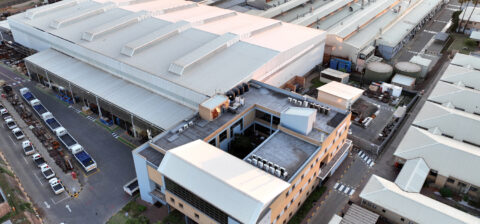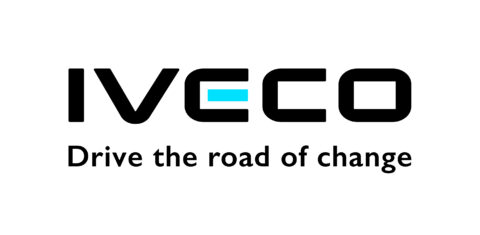Sunday Times Supply Chain
Trends In Supply Chain Management
The COVID-19 pandemic has laid bare many of the long-standing vulnerabilities and risks lurking in organisations’ supply chains. In some cases, it has caused companies to take a hard look at their processes and business models. In others, it has opened up new opportunities for innovation, growth and competitive advantage in the post-pandemic world.
Most notably, perhaps, it has demonstrated the power of interconnected digital supply networks to enable enterprises to anticipate and respond to unexpected changes, and minimise their impacts.
Kavitha Prag, director of supply chain and network operations at Deloitte Africa, suggests that supply chains are evolving from the traditional linear model into interconnected dynamic networks. “We are seeing three key shifts in the supply chain that enable this,” says Prag. “The first is a move toward a more customer-centric supply chain, which meets evolving customer values and product and service requirements, and uses this as a competitive advantage.
“The second is getting closer to and building trusted, connected supply networks that offer visibility across multiple tiers of the chain, something that includes a shift towards more sustainable and ethical sourcing.
“Lastly, there is a much greater focus on designing supply chains that are optimised for cost, service, and resilience.”
Cost and efficiency, explains Prag, have long been drivers for supply chain design. However, in a post-pandemic world, the key shift is to include flexibility and agility, as these grow resilience in the supply chain.
Key themes in 2021
According to Samantha Naidoo, logistics industry value advisor at SAP Africa, there are four key themes or trends that are expected to come to the fore in 2021. The first of these is agility, which is all about anticipating and fulfilling customer demand by digitally transforming the supply chain, with a view to greater customer-centricity, visibility, productivity and sustainability. “Increased agility will help to eliminate silos across design, planning, manufacturing and operations, ensuring a better response to any unforeseen disruption.”
Naidoo says the second trend is that of productivity. “This is mostly about reinventing production using intelligent assets and processes that dynamically adapt to production priorities and deliver customisation at scale.
“The third theme is connectivity. Truly effective connectivity gives your business global scope and reach, which in turn amplifies scale. Meanwhile, network-wide orchestration will redefine collaboration, even as integrated intelligence delivers predictability. Looking internally, you will be able to connect the entire company – orchestrating sales, service and logistics with production – to transform how you work genuinely.”
Lastly, sustainability will be critical moving forward, adds Prag. This means designing products that are recyclable and environmentally sustainable, reducing emissions and sourcing materials ethically, and manufacturing with minimal waste or environmental impact.
“In addition, supply chain managers will seek to deliver using logistics processes that optimise loads to reduce both mileage and carbon footprint, operate assets and equipment in an energy-efficient manner that is safe for the environment and workforce, and network to enable collaboration within the supply chain, in order to support a circular economy and overall sustainable business models.”
Big changes coming
Rheinhardt Schulze, PwC associate director and connected supply chain lead, suggests that looking just beyond these current trends, additional changes can be expected.
For one thing, he indicates that we will see an increasing acceleration of the shift from on-premise-type retail to online digital platforms. “You could say this is being ‘forced’ and sped up by the necessity brought on by the pandemic. In the near future, customers will increasingly want to be able to view in one channel, order in another and return via another still, all while still experiencing a single and consistent brand.
“Even as they adopt this multichannel approach, they will hold you to ransom with the knowledge that your competitor is just a click away,” continues Schulze. “Therefore, the supply chain’s role in enabling an effective omnichannel shift is paramount.”
Schulze adds that furthermore, the term “supply chain” is itself due for review, as these systems become increasingly connected and autonomous. We will instead see a move to terms like “supply ecosystems” and “supply networks”, he suggests, as these better represent the current state. “Remember that the traditional linear supply chain is evolving into a collaborative ecosystem of internal and external stakeholders, technology, functions and goals, all centred around trust and customer experience, and enabled by a connected digital thread.
“Finally, we should note that the role of disruptive technologies like artificial intelligence (AI), blockchain and Internet of Things has changed from that of differentiators to prerequisites for survival.”
Schulze notes that with crises like COVID-19 posing unprecedented variables, permutations, scenarios and what-if questions that need to be answered in a much shorter time, limited human capabilities are no longer enough. “Technologies like AI will empower businesses to start at a better base to apply intelligence, with the capability to move towards a ‘self-learning supply chain’ that will not only predict, but also prescribe and self-learn behaviour. This is where the future is heading.”
Where next for local businesses?
Deloitte’s Prag points out that the pandemic has contributed to the replacement of brick-and-mortar by ecommerce. Large and small businesses were quick to enhance or launch online shopping services during lockdown, with some even pushing the delivery-time boundary. “This has now set the bar from a customer expectation perspective and has forced competitors to follow the trend. Of course, while the focus has been on the front end, many of their core supply chain networks remain older, clunky and more traditional. This creates bottlenecks, so businesses will now also have to focus on the end-to-end supply chain.”
Jonathan Tullett, senior research manager of IT services for IDC sub-Saharan Africa, adds that local companies are still part of global supply chains. It is thus inevitable that our large organisations – particularly in manufacturing, resources, and healthcare – will be exposed to supply chain optimisation from abroad. In fact, many of them are already on that path to some degree.
“Some of this is also manifesting in other areas, such as within retail banking, where it’s about core banking and financial service delivery, rather than supply chain,” says Tullett. “However, outside of the top enterprises, the country as a whole is noticeably behind.
It varies greatly of course, since we’re talking about a large, diverse market, but if we look at the growth of spend in key technologies in South Africa compared to more advanced markets, most sectors are two to three years behind, with some as much as five years.”
In technology terms, suggests Tullett, that is a long way behind, although the good news is that many of these technologies and practices can be put in place and return results within just a few months.
“The bad news, and the real challenge ahead, is that the business culture has to change for true transformation to occur, and this is usually the hardest part. You can leapfrog technology, but you simply cannot leapfrog maturity – that is something that has to evolve naturally. Therefore, my advice to end-user organisations is to ensure that you provide just as much focus on your digital maturity as you do on the technology,” he concludes.





